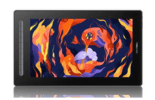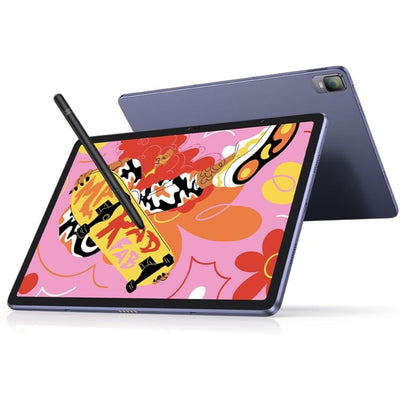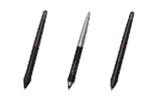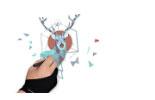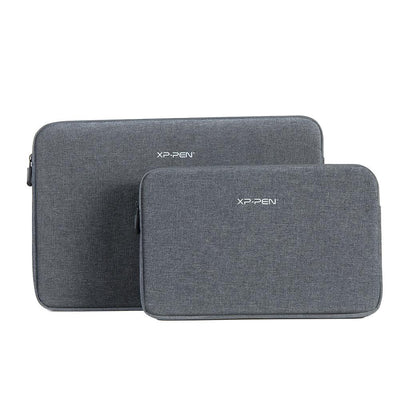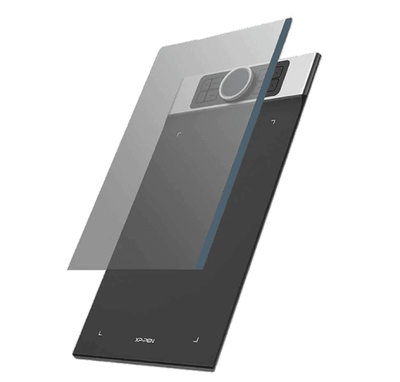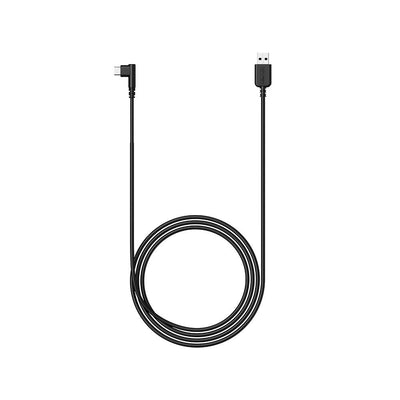2 Point Perspective Drawing : An Easy Step-by-Step Tutorial

If you're interested in learning the art of 2 point perspective drawing, you've come to the right place.
In this easy step-by-step tutorial, we'll guide you through the fundamentals of this technique and provide you with valuable tips and tricks to enhance your skills.
So let's dive in and discover the world of 2 point perspective drawing!
Understanding the Basics of 2 Point Perspective Drawing

Before we delve into the details, let's first understand what exactly 2 point perspective drawing entails.
In simple terms, it is a technique used in art to create the illusion of depth and space. It involves using two vanishing points on the horizon line to construct objects and scenes realistically.
Now, you may wonder why perspective is so important in art. Well, perspective plays a vital role in creating realistic and visually appealing drawings. It adds depth, dimension, and a sense of realism to your artwork, allowing the viewer to immerse themselves in your creation.
When it comes to 2 point perspective drawing, understanding the concept of vanishing points is crucial. Vanishing points are the points on the horizon line where parallel lines seem to converge. In a 2 point perspective drawing, there are two vanishing points, usually placed on the left and right sides of the horizon line.
By using these vanishing points, artists can accurately depict objects and scenes in a way that mimics how we perceive depth in the real world. It allows for a more realistic representation of space and creates a sense of three-dimensionality on a two-dimensional surface.
One of the key benefits of 2 point perspective drawing is its versatility. It can be used to draw a wide range of subjects, from architectural structures and interior spaces to landscapes and still life compositions.
With this technique, artists can bring their imagination to life and create visually captivating artworks. Mastering the art of 2 point perspective drawing requires practice and patience.
It involves understanding the principles of foreshortening, proportion, and spatial relationships. Artists must also have a keen eye for detail and a solid understanding of how light and shadow interact with objects in space.
When starting with 2 point perspective drawing, it is helpful to begin with simple objects and gradually progress to more complex scenes. By practicing regularly and studying the works of accomplished artists, you can refine your skills and develop your unique style.
So, the next time you admire a beautifully rendered architectural drawing or a breathtaking landscape, remember the underlying technique of 2 point perspective drawing that brings it to life.
It is a fundamental skill that every aspiring artist should strive to master, as it opens up a world of possibilities and allows you to create art that truly captivates the viewer.
Materials Needed for 2 Point Perspective Drawing

Before you begin your artistic journey, it's essential to have the right tools and materials by your side.
Here are some key items you'll need for 2 point perspective drawing:
- Graphite Pencils : A range of pencils, from H to B, will help you achieve various levels of shading and detailing.
- Ruler : A straight-edge ruler is essential for creating precise lines and angles in your drawing.
- Drawing Paper : Choose a smooth and sturdy paper that can withstand erasing and detailed work.
- Eraser : A kneaded eraser or a precision eraser is ideal for correcting mistakes and achieving clean lines.
- Optional : You can also experiment with colored pencils, markers, or watercolors to add a touch of vibrancy to your drawings.
Once you have gathered these materials, you're ready to embark on your artistic journey!
Now that you have your graphite pencils, let's talk about the different types and their uses. The H pencils, such as 2H or 4H, have a harder lead and are perfect for creating light and fine lines.
On the other hand, the B pencils, like 2B or 4B, have a softer lead that allows for darker and bolder lines. By using a range of pencils, you can add depth and dimension to your 2 point perspective drawing.
When it comes to rulers, you have a few options. A transparent ruler with measurement markings is great for precise measurements and accurate angles.
Alternatively, a metal ruler with a non-slip backing provides stability and prevents any accidental slips while drawing. Whichever ruler you choose, make sure it's long enough to span the width of your drawing paper.
Choosing the right drawing paper is crucial for a successful 2 point perspective drawing. Look for a paper that is smooth to prevent any unwanted texture in your lines.
Additionally, opt for a sturdy paper that can handle erasing and detailed work without tearing or smudging. Consider using a heavier weight paper, such as 90lb or 100lb, to ensure durability.
Now, let's talk about erasers. A kneaded eraser is a versatile tool that can be shaped and molded to fit your needs. It's perfect for lifting graphite and charcoal, allowing you to make corrections and achieve clean lines.
If you prefer a more precise eraser, a precision eraser with a fine tip is a great option. It allows you to erase small details without affecting the surrounding areas.
While the basic materials mentioned above are essential for 2 point perspective drawing, you can also explore additional mediums to enhance your artwork. Colored pencils can add a pop of color to your drawings, allowing you to create vibrant and eye-catching compositions.
Markers, with their bold and saturated pigments, can be used to emphasize certain elements or create dynamic contrasts. Watercolors, with their translucent and fluid nature, can bring a sense of depth and atmosphere to your artwork.
With your materials gathered and a world of possibilities at your fingertips, it's time to unleash your creativity and dive into the captivating world of 2 point perspective drawing. Remember to experiment, make mistakes, and most importantly, enjoy the process!
Step by Step Guide to 2 Point Perspective Drawing

Now let's get started with the step-by-step process of creating stunning 2 point perspective drawings:
Before we dive into the details, let's take a moment to appreciate the beauty and complexity of 2 point perspective drawing. This technique allows artists to create realistic and immersive images that transport viewers into a different world.
By understanding the principles of perspective, you can bring your perspective drawings to life and captivate your audience.
- Setting Up Your Horizon Line and Vanishing Points
Begin by drawing a straight horizon line across your paper. This line will determine the level at which objects appear to recede into the distance. Imagine standing on a vast plain, where the sky meets the ground at the horizon.
The horizon line serves as a reference point for the entire drawing. Next, mark two vanishing points on the horizon line, ensuring they are equally spaced from the center.
These vanishing points are like anchors that guide the placement and perspective of objects within your drawing. They create the illusion of depth and distance, giving your artwork a sense of realism.
- Drawing the Initial Shape
To construct the basic framework of your drawing, start by drawing a simple shape, such as a cube or a rectangular prism. This shape will serve as the foundation upon which you will build your three-dimensional world.
Position this shape so that its corners align with the vanishing points on the horizon line. Imagine the initial shape as a building block, a starting point from which you will expand and create an entire scene.
It's like laying the foundation of a house before adding walls, windows, and doors. The initial shape sets the stage for the magic that is about to unfold.
- Adding Depth and Dimension
Now comes the exciting part - adding depth and dimension to your drawing! Use the vanishing points as references to create the illusion of objects receding into space.
Imagine the lines extending from the corners of your initial shape as pathways leading into the distance, disappearing into the horizon.
As you draw additional lines from the corners of your initial shape towards the vanishing points, you are essentially creating a network of imaginary lines that converge towards a single point on the horizon. This convergence is what gives your drawing a sense of depth and realism.
Repeat this process for all the objects or elements you wish to include in your drawing. Each object will have its own unique perspective, depending on its position in relation to the vanishing points.
Remember to adjust the size and position of each object based on its perspective within the scene.
By carefully observing the world around you and understanding the principles of perspective, you can create breathtaking drawings that transport viewers into a different reality.
The possibilities are endless, and with practice, you will continue to refine your skills and create masterpieces that leave a lasting impression.
For any artist, it is also crucial to know the Difference between Aerial & Linear Perspective.
Tips & Tricks for Perfecting 2 Point Perspective Drawing

While mastering 2 point perspective drawing takes practice and patience, we've got some helpful tips and tricks to make your journey smoother:
Before we dive into the tips, let's take a moment to understand what 2 point perspective drawing is. It is a drawing technique that creates the illusion of depth and three-dimensionality on a two-dimensional surface.
It involves using two vanishing points on the horizon line to create realistic and accurate drawings.
Now, let's explore some tips and tricks to enhance your 2 point perspective drawing skills:
- Avoiding Common Mistakes
One common mistake in 2 point perspective drawing is inaccurate placement of vanishing points. Ensure that your vanishing points are equidistant from the center and aligned with the objects in your drawing to maintain realism.
Another mistake to avoid is neglecting the importance of the horizon line. The horizon line determines the eye level of the viewer and affects the overall composition of your drawing.
Pay attention to its placement and ensure it aligns with the objects in your scene. Furthermore, be mindful of the scale and proportion of your objects.
In 2 point perspective, objects closer to the viewer appear larger, while those farther away appear smaller. Keep this in mind to create a sense of depth and realism in your drawings.
- Enhancing Your Drawing with Shading and Detailing
Shading and detailing play a crucial role in adding realism to your artwork. Experiment with different shading techniques to create depth, and add intricate details to bring your drawing to life.
When shading, consider the direction and intensity of the light source in your scene. This will help you determine where to add highlights and shadows, adding depth and dimension to your drawing.
Additionally, pay attention to textures and patterns in your scene. Whether it's the roughness of a brick wall or the smoothness of a glass surface, capturing these details will make your drawing more realistic and engaging.
Don't be afraid to use reference images or study real-life objects to understand how light interacts with different surfaces. This will help you improve your shading and detailing skills and make your drawings more convincing.
Remember, practice is key when it comes to perfecting 2 point perspective drawing. Keep experimenting, learning, and pushing yourself to create more complex and compelling drawings.
With time and dedication, you'll master this technique and create stunning artworks that captivate viewers.
Moving Beyond the Basics

Once you've mastered the basics of 2 point perspective drawing, you can explore more advanced techniques to take your artwork to the next level:
- Incorporating 2 Point Perspective into Complex Drawings
Challenge yourself by incorporating 2 point perspective into complex scenes or more intricate objects. By pushing the boundaries of your skills, you'll continue to grow as an artist.
- Exploring Other Forms of Perspective Drawing
2 point perspective is just one of many perspective drawing techniques. Expand your artistic repertoire by exploring other forms of perspective, such as 1 point and 3 point perspective. Each offers unique challenges and artistic possibilities.
With your newfound knowledge of 2 point perspective drawing, a world of artistic possibilities awaits you. So grab your materials, let your imagination soar, and bring your drawings to life with depth and dimension!
Now you know how to draw in 2 point perspective, lets learn how to draw in 3 point perspective.






